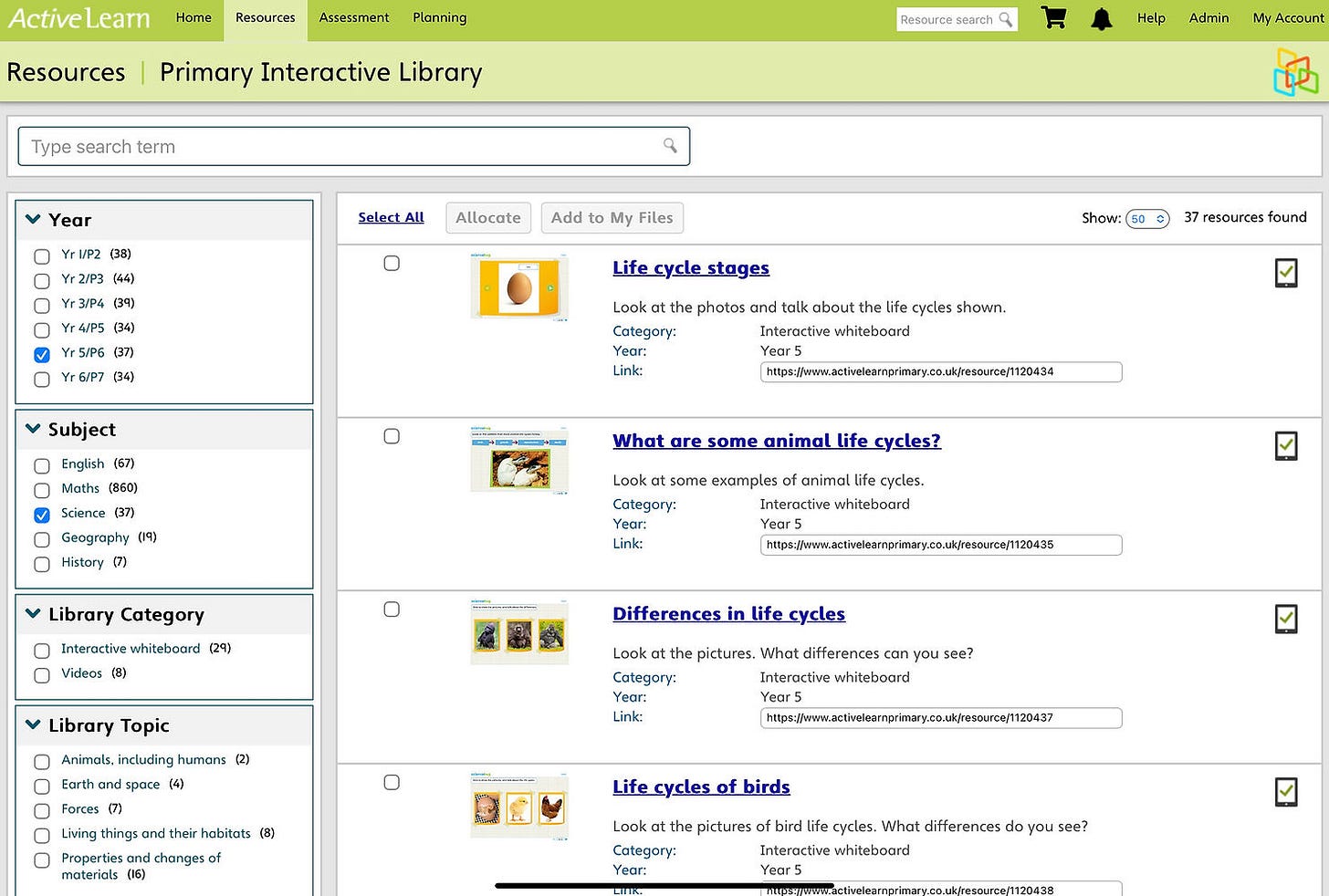002 Resourcing the Curriculum
A Closer Look at Pearson's Primary Interactive Library: A Treasure Trove for Teachers
Happy Summer Holidays!
We’ve made it - another year completed.
When you’re ready to start thinking about next year - and I hope that’s a few weeks away from now - you may find this review of Pearson’s Interactive Library helpful.
Despite the ‘new’ National Curriculum approaching its tenth birthday, there is still a paucity of high-quality resources available for teachers, especially those for the wider curriculum and especially outside of commercial schemes of work. This can often lead to low-quality resources being used, or hours of teachers’ time scouring the internet for age-appropriate material (that isn’t water-marked or pixelated beyond the point of being useful).
After spending a year of updating our schemes of work at my school, I was excited to try Pearson’s Interactive Library, which offers a collection of over 5000 resources, including games, quizzes, maps, and timelines, for English, Maths, Science, History and Geography.
Pearson have made available many of the web-based resources created for its commercial schemes of work. This means that they are available to be used by teachers whose schools have not bought in to the full packages. The resources match objectives from both Key Stage 1 and Key Stage 2, and they could be used for whole-class teaching, independent practice or for homework.
The Library is designed to be easy to use, and the resources are categorised by year group and topic, making it easy for teachers to find the resources they need quickly. Most of the resources are accompanied by a short description and a set of learning objectives, which makes it easy for teachers to understand how the resource can be used to support their teaching.
It really doesn’t take much time at all to find a suitable resource, and the Library is sufficiently easy to browse through if you don’t know what exact resource to search for.
It is easy to search for resources by year group, subject, resource type and topics.
One of the things that I appreciated about the Library was the quality of the materials. The imagery, in particular, has been carefully selected to be appropriate for primary students. Many of the diagrams and animations are both appealing to children but at the same time much simpler and easier to read than many similar images found via Google search. For me, this is especially important when we consider the cognitive load of resources, especially for pupils who sometimes struggle. I have a particular bugbear with finding suitable maps for use across the Geography curriculum but Pearson’s bank of maps is excellent for children from Year 1 to Year 6. Some of these are interactive so that children can practise labelling countries and capitals; these can be allocated to children for homework, saving lots of paper and photocopying.
Have a fantastic summer holiday!
Marc 🙂


